Ryobi Battery Powered vs. Campbell Hausfeld Pneumatic Finish Nailer Comparison
A finish nailer is a great tool to have in your workshop. It’s great for small projects, installing moulding, wall planking and more. After using both types of finish nailers for many projects, I wanted to break down the pros and cons of each.
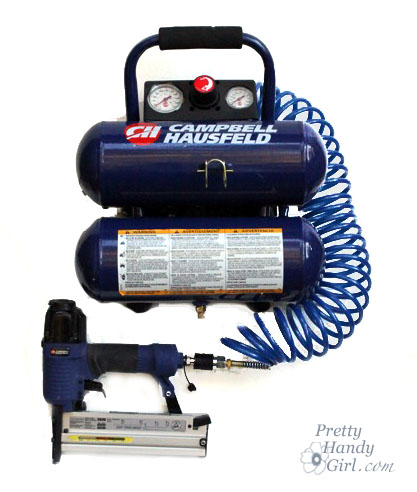 I was able to score this Campbell-Hausfeld nailer and compressor combo around Father’s Day at Lowe’s for $69! (Normal MSRP is $99.) I’ve used the compressor-powered nailer for many years on an assortment of DIY projects (like my Art & Craft Studio scrap wood wall.) I haven’t had any problems with it. It’s reliable, lightweight and can fire a variety of length finish nails and U-staples. For the value, you can’t go wrong. The cons of the Campbell Hausfeld are mostly related to the compressor. It is very loud when the air tank is recharging. It’s a little bulky to store and haul around. You are limited to the length of your air hose and a power source. And you must empty the tank and maintain it periodically.
I was able to score this Campbell-Hausfeld nailer and compressor combo around Father’s Day at Lowe’s for $69! (Normal MSRP is $99.) I’ve used the compressor-powered nailer for many years on an assortment of DIY projects (like my Art & Craft Studio scrap wood wall.) I haven’t had any problems with it. It’s reliable, lightweight and can fire a variety of length finish nails and U-staples. For the value, you can’t go wrong. The cons of the Campbell Hausfeld are mostly related to the compressor. It is very loud when the air tank is recharging. It’s a little bulky to store and haul around. You are limited to the length of your air hose and a power source. And you must empty the tank and maintain it periodically.
In all the ways that the Campbell-Hausfeld fails, the Ryobi Air Strike excels. It doesn’t take up as much room to store. No compressor needed because it is essentially built into the tool. As long as the battery is charged you are ready to fire nails on a moment’s notice. The light helps illuminate in dark working areas. You aren’t tethered to an air hose or compressor. This allows you the freedom to wander anywhere with the nail gun. And it is quiet (with the exception of the bang when firing the nail.)
The downsides are it doesn’t shoot U-staples. The gun itself is heavier to hold because of the battery and size of the gun. If you lose charge in the battery you have to wait a while for it to charge. Finally, the price is slightly higher than the MSRP of the Campbell-Hausfeld at $129.
Update: I’ve had a few occasions where my Ryobi Air Strike has quit firing. Usually I can get it working again by unlatching the front of the gun and checking it for jams or reloading with new nails. Recently at a DIY conference, I learned that I’m not the only person who has had this problem. So far the nail gun still works, hopefully it will continue to do so.
2nd Update: After another winter of the Ryobi Air Strike refusing to fire after every other nail, I’ve finally decided to pitch it. I’m in the process of testing a Porter-Cable 18 gauge 20 volt brad nailer and a DeWalt 16 gauge Angled Finish Nailer.
I hope this comparison helps you select your own finish nail gun.
Want to learn how to use a finish nailer? Check out my tool tutorial videos and more!
Pin for later!
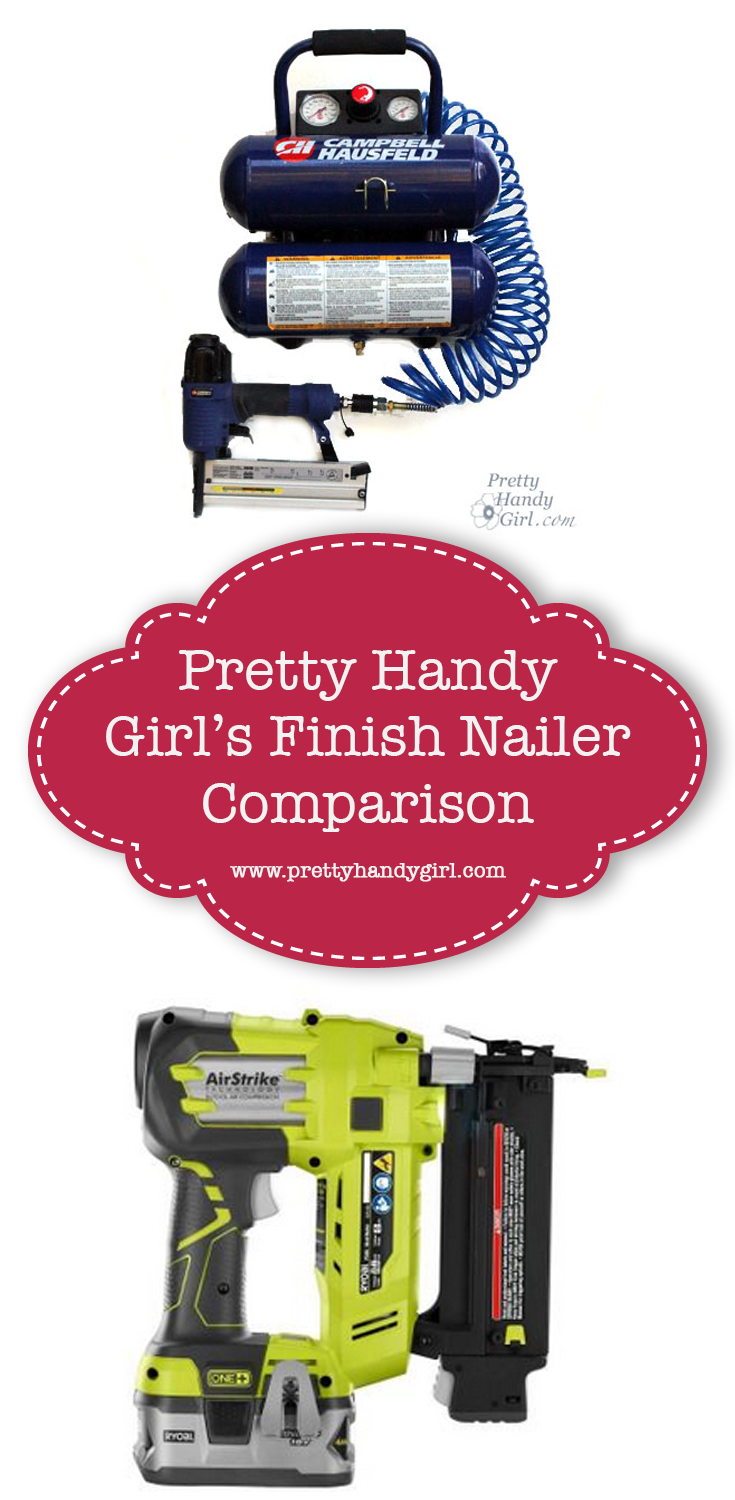

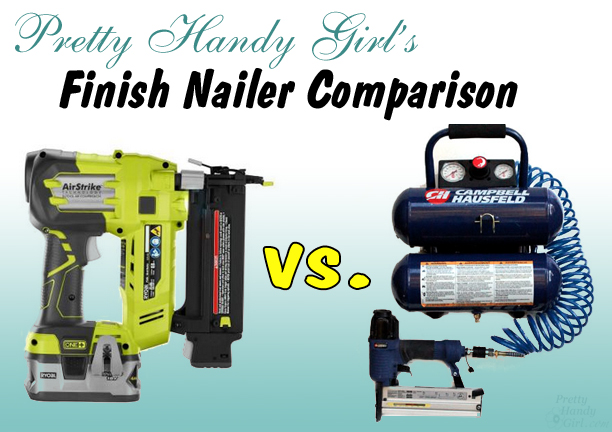
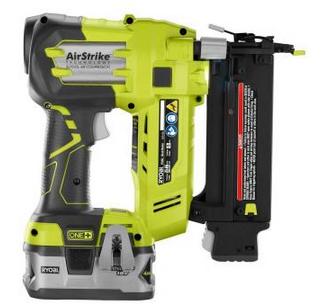
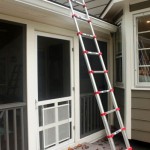
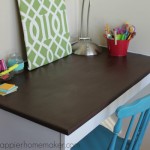
The comment about the nailer stopping: I believe it’s designed to stop firing when 5 or less nails are left to prevent damage to the gun. You could add more nails to start it again (like another 50 to the existing 5).
John, yes, you are correct, I’ve figured that out. But, mine still misfires a fair amount especially in the winter and even when it is full of nails.
It’s the actuator that actually pushes the nail forward. I had the same issue. I opened the nose of the gun pulled out the actuator cleaned it oiled it and haven’t had issues since. Was ready to junk it but got into a pinch and had o figure out how to fix it. Glad I didn’t junk it.
It’s my good luck that I have learn a lot from your article. Now I want to know about Brad Nailer. Would you please help me for learn about Brad Nailer.
I have the Ryobi and it is AMAZING!!!!! I bought two batteries, but it works for a long time on one charge. It is the tool that I am most passionate about right now. I did some built in book cases and it has a lot of power. The batteries charge really quickly. After I was done with my project I found myself trying to think of other things to do with it. Nothing really works in the place of this thing especially since I can’t drive a nail in straight to save my life. If you have other Ryobi tools it takes the same charging packs I’m told. I have mostly Makita.
Perfect timing on this post. I’ve been trying to decide on what kind of nail gun to purchase.
Thank you for this post. I’ve recently purchased a Bostitch air compressor and gun combo when they were on sale. And although I haven’t used it a ton yet, i do love it. But so many of the blogs I peruse, use the Air Strike, and I’ve been wondering what all your opinions on them vs the compressors were. I’m still pondering the purchase of one, so your thoughts about the two were very helpful.
thanx bunches!!
We own the Campbell-Hausfeld and love it! We bought it about 3 years ago when we were installing a bead board ceiling. My husband insisted we’d need a finish nailer and he was right. I agree with you on all the cons – especially how loud it is. But I’ve used it for countless projects over the years and can’t imagine not having it. It’s so reliable!
I’m intrigued by the Ryobi Air Strike. I would love to have a cordless option when I’m working on a small project and don’t want to drag the whole air compressor up from the basement.
Thanks for the info, great post!!
Great post.. I have the CH with that same compressor and I also have a few additional nailers (so I can use a broader range of nail/staple sizes) and I tried the Airstrike at Haven, and I agree with your review whole heartedly.
The lightweight, less tethered portability of the AS is really nice. But you do lose out on having a compressor (which is actually the expensive part of the CH.) The compressor itself is like another tool, since I also use it to blow up my bike tires, sports balls, air brush, blow out the garage etc.
I didn’t really think about weight until you just mentioned it, but that tiny nailer on the CH is super light. So if I was putting up crown molding for hours on end, I could see the AS start to get a little heavy on the arms. But for a quick little craft project or small sections of molding etc, I think the AS would be so nice since you could grab it and go. Plus if you are ever working with the power off, it would be nice since you wouldn’t have to plug in a compressor.
I think the answer is CLEAR. Buy both! 🙂